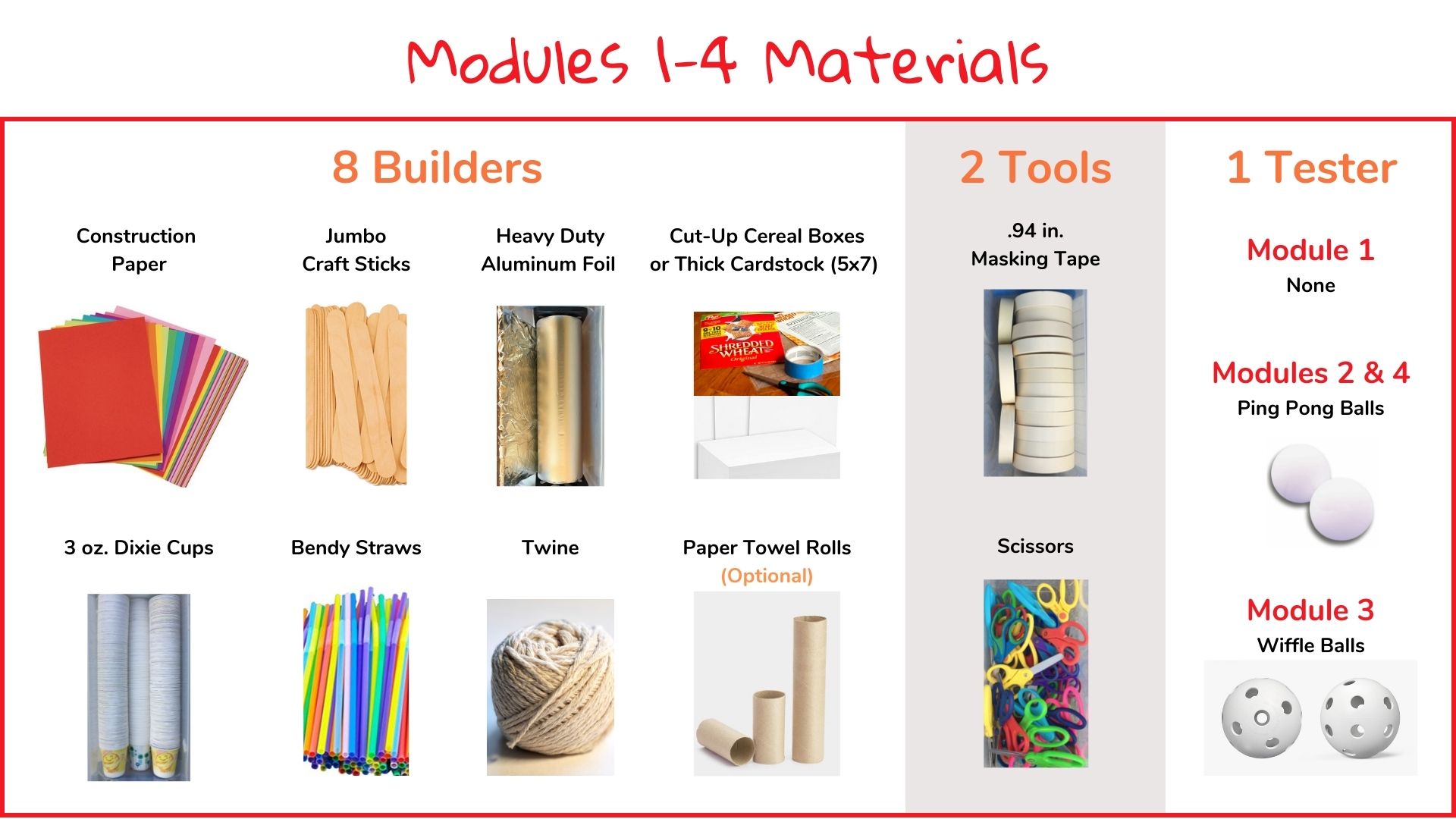STEM Challenge: Bio Bubble

Challenge
Create a bio bubble. The bio bubble must be large enough for astronauts to comfortably move around in and include entry and exit points for transitioning between different activity bubbles.
Constraints and Success Criteria
- The shelter must be hermetically-sealed.
- Must accommodate sleeping, eating, and recreational activities.
- Requires entry and exit points for movement between bubbles.
- Success will be measured through a testing phase where the bio bubbles are subjected to an air tightness test. This involves placing the model in a testing tub and covering it with beans or beads to simulate Martian dust. If any particles penetrate the shelter, it fails the test, indicating it is not hermetically-sealed.
Materials

You need a container and beans or beads as testers for this challenge.
Logistics
- Prepare Materials: Ensure you have all the necessary materials ready beforehand and organize them so that they are easily accessible to students. Students should use no more than five of any one material per creation! For example, a student can use five straws and five pieces of paper, but not ten straws. If you provide aluminum foil, no more than one arm’s length piece for each student!
- Set Up Testing Area: Create a designated area where students can test their bio bubbles.
- Provide Guidelines and Constraints: Reiterate the challenge and the constraints to students as needed. Emphasize the importance of following safety guidelines and considering the constraints, while designing their bio bubbles. Building time is 45 minutes!
- Model the Design Process: Before students begin, demonstrate the design process by going through the steps yourself. Discuss how to brainstorm ideas, create prototypes, test them, and make iterations based on the results, as needed.
- Encourage Collaboration: Foster a collaborative environment where students can work together in pairs. Encourage them to share ideas, help each other troubleshoot challenges, and provide constructive feedback throughout the process. But no groups of three!
- Support Adaptation: Encourage students to embrace the mindset of adaptation and problem-solving. Help them see that setbacks and failures are opportunities to learn and make improvements. Guide them in identifying areas for adaptation and brainstorming alternative solutions.
- Facilitate Reflection: Set aside time for students to reflect on their design process and decision-making. Ask questions that prompt them to think critically about their choices, challenges they faced, and what they learned from the experience. This reflection can be done individually, in pairs, or as a whole-class discussion.
- Celebrate and Showcase: Once students have completed the challenge, celebrate their efforts and showcase their work. Provide opportunities for students to share their experiences, explain their design choices, and reflect on the overall learning journey.
CASEL Discussion Questions
Five questions aligned to Responsible Decision Making — our focus CASEL competency for Module 3 — for teachers to foster an engaging discussion and social-emotional learning
- How can you demonstrate responsibility in the ideate and prototype steps of your bio bubble design?
- How can you use the results from the air tightness test to make improvements to your bio bubble?
- How do you prioritize the features of your bio bubble to meet the basic needs of astronauts while considering resource limitations?
- In what ways does collaborating with teammates on the bio bubble project help in making better decisions?
- What steps can you take to ensure that your bio bubble design decisions are sustainable and do not negatively impact the Martian environment?



